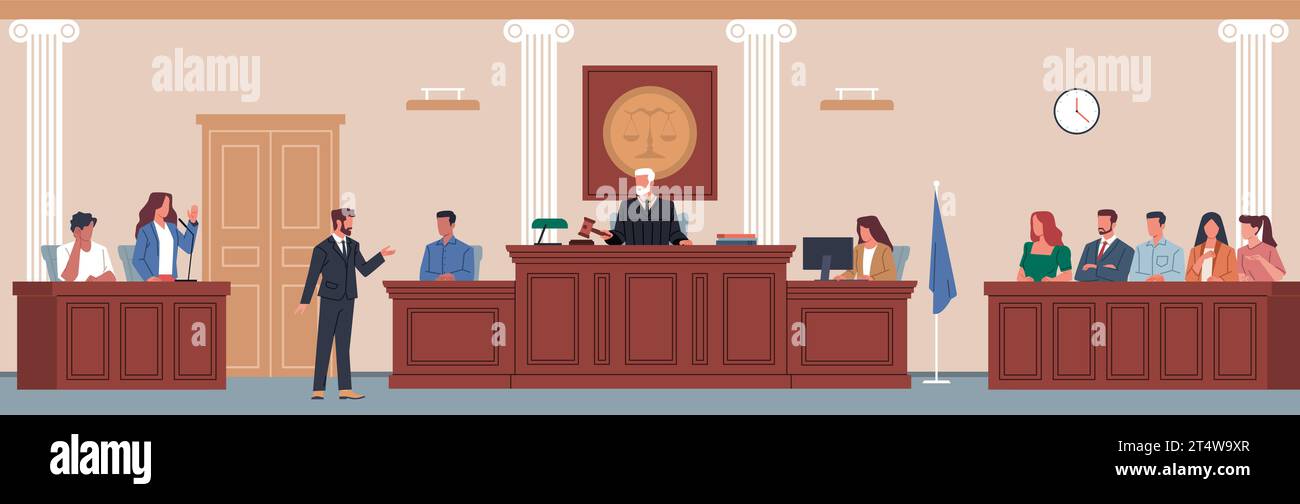Trial Presentation Tailored Solutions for Captivating Legal Presentations
Trial Presentation Tailored Solutions for Captivating Legal Presentations
Blog Article
Mesmerize the Jury: Vital Aspects of a Powerful Trial Presentation
Necessary elements such as recognizing the audience, crafting an engaging narrative, and understanding verbal and non-verbal interaction are vital components of a reliable discussion. As these elements link, they form a cohesive approach that not only informs yet additionally engages jurors on several levels.

Recognizing Your Target Market
Understanding your audience is an essential facet of reliable trial presentation. A successful presentation depends upon the capability to comprehend the demographics, worths, and proneness of jurors. This understanding informs how arguments are framed, evidence is offered, and sob stories are crafted, ensuring that the message resonates with the jurors on a personal level.
Research indicates that jurors come from diverse histories and might have differing degrees of understanding concerning lawful process (trial presentation). Hence, it is essential to prevent lawful lingo that can estrange or confuse them. Instead, employing clear, relatable language promotes interaction and comprehension. Furthermore, comprehending the jurors' possible prejudices and life experiences permits the trial presenter to prepare for arguments and address concerns proactively.
Reliable trial discussion also includes observing jurors' responses during the procedures. Involving with jurors as people rather than a cumulative unit is necessary in fostering a strong link in the courtroom.

Crafting an Engaging Story
Crafting a compelling story is important in guiding jurors with the complexities of an instance. A well-structured narrative not just simplifies detailed legal concepts however also involves jurors on an emotional degree, making the information extra relatable and unforgettable.
This message ought to reverberate with the jurors' worths and experiences, promoting a link that goes beyond mere truths. This sequential strategy can help jurors comply with the development of occasions, emphasizing cause and impact.
Including human elements-- such as personal stories or stories-- can further improve the story's influence. These elements evoke empathy, enabling jurors to envision the consequences of the case on the real worlds. In addition, using a consistent style throughout the discussion enhances the major debate, making it easier for jurors to retain vital points.
Eventually, an engaging story changes a test presentation from a plain address of realities right into an influential tale that astounds the court, urging them to mull over with both factor and feeling.
Making Use Of Aesthetic Help
Including aesthetic aids into a test discussion can substantially improve jurors' comprehension and retention of information. Aesthetic materials such as charts, layouts, pictures, and videos can transform intricate lawful concepts and evidence right into quickly digestible formats. By involving several senses, these help enable jurors to imagine the case's crucial elements, making it simpler for them to follow along and realize complex details.
In addition, well-designed visual help can emphasize crucial points and highlight partnerships between various pieces of proof. For example, timelines can efficiently highlight the sequence of occasions, while annotated pictures can clarify particular details appropriate to the situation. This not just help in understanding but additionally strengthens the narrative offered by the attorney.
It is important, nonetheless, to guarantee that aesthetic help are appropriate, clear, and professionally provided. Overly complicated or chaotic visuals may overwhelm jurors and interfere with the message. When utilized carefully, visual help serve to match the dental arguments and boost the general influence of the test presentation. Inevitably, effective visual interaction can be a powerful tool in encouraging go to the website jurors and helping them get to educated conclusions.
Understanding Verbal Communication
Efficient spoken interaction is crucial in a trial discussion, as it offers as the main methods via which attorneys convey their arguments and connect with jurors. Simpleness in language fosters understanding and aids jurors grasp complex concerns provided throughout the test.
In addition, tone and pacing dramatically impact exactly how messages are obtained. A confident tone conveys authority, while appropriate pacing allows jurors to absorb info without really feeling overwhelmed. Attorneys ought to also vary their singing inflections to highlight bottom lines and maintain jurors' passion throughout the presentation.
In addition, the organization of spoken debates is vital. Structuring the narrative realistically and coherently assists jurors follow the lawyer's line of thinking, making it simpler for them to maintain crucial info. Making use of convincing methods, such as storytelling, can additionally enhance the emotional vibration of the disagreements presented, consequently developing a more profound connection with jurors.
Ultimately, grasping verbal communication not just reinforces an attorney's instance but additionally promotes count on and rapport with the jury, significantly enhancing the possibilities of a favorable decision.

Involving With Body Movement
Nonverbal communication plays an essential function in test presentations, often sharing messages that words alone can not reveal. Body movement, including motions, pose, facial expressions, and eye get in touch with, considerably affects how jurors regard the trustworthiness and genuineness of the presenter. A certain stance, with shoulders back and an open stance, can impart trust, while closed-off body movement might suggest defensiveness or unpredictability.

Faces need to show the feelings connected with the instance, strengthening the story existing. have a peek here A genuine expression throughout a poignant moment can evoke empathy and enhance the psychological charm. Inevitably, mastering body movement is vital for reliable trial discussions, as it enhances verbal communication and establishes a compelling visibility that resonates with the jury.
Verdict
To conclude, astounding the jury requires a critical method that includes understanding the audience, crafting an engaging story, using aesthetic aids, grasping spoken interaction, and involving through body language. Each aspect plays an essential duty in developing a powerful trial presentation that reverberates with jurors on both psychological and intellectual levels (trial presentation). By integrating these parts efficiently, lawyers can significantly enhance their capability to encourage click now and affect court decision-making
Report this page